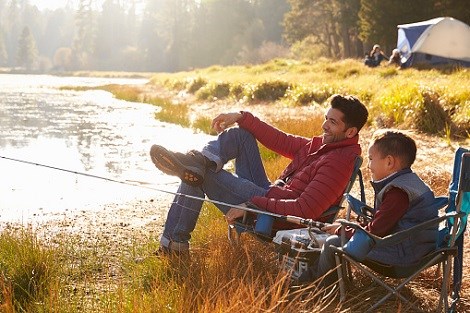Flipped learning in a flipped classroom
Chia Suan Chong looks at how we can make our classrooms more practical by flipping the classroom and their learning.

I recently had a brief discussion with my father about the changes in education in an age of exponential changes in technology and mindset. Rather than trying to predict the knowledge that the student might need and imparting that knowledge, it is more important that we as educators try and equip our students with the ability to find out what they need to know and the skills to deal with the issues and the situations that they might come face to face with. Teachers were making the shift from being knowledge-givers to facilitators and coaches.
The following quote seems to surmise our role as teacher and facilitator perfectly:
Give a man a fish and you feed him for a day.
Teach a man to fish and you feed him for a lifetime.
But how do we go about teaching the man to fish?
In the style of traditional academia, the teacher might lecture the man on some theories of fishing, give him some instructions and show him how it should all work, and then ask him to go practise fishing at home and hand in the fish he’d caught for marking the next day.
Sadly, the man caught no fish and the following day, the teacher marked him down and asked him to go home and try again. Little did the teacher know that the man was having trouble rigging his pole and getting the link, hook and bobber in the right position. After many days of trying on his own, the man was finally able to get his pole ready for the bait, but in class, the teacher had already moved on to the Solunar Theory of how the position of the sun and the moon might affect the behaviour of fish.
Perhaps lecturing and showing were just not enough to teach this man to fish. The learning process could have been more effective if the teacher got the man to prep his fishing equipment in class. He could try and rig his pole and bait his hook with the teacher there to coach and guide him.
But what about the theory? That’s important too, you might argue. The man could have read about the overview of fishing and what the different steps entail before attending his first lesson, where he could then clarify his doubts, voice his fears and discuss the more complicated aspects.
When attempting to bait his hook, the man realized that he had a real fear of worms and worked himself up into a frenzy about touching them. The teacher set him some homework to go and research different types of bait and to choose a bait that he thinks he’d like to try. The teacher also got him watching a YouTube video on how to bait a hook. The next day, the man brought in some prawns (that he’d chosen as bait) and practised baiting his hook while the teacher observed, made notes and steered him in the right direction.

By flipping the learning experience so that what used to be done in class (e.g. the lectures, the theory, the videos, the readings etc.) is now done at home, and what used to be done as homework (the synthesis of what was taught, the application, the practice, the reflection) is now done in class with opportunities for peer and teacher feedback and guidance.
In a time where Learning Management Systems like Edmodo and Schoology have slowly started becoming the norm in many educational institutes, students now can easily access course materials online. Lectures can be recorded and viewed at a convenient time for the student, the theory and the instructions can be digested before the class, allowing precious class time to be used for discussion, questions, interaction and trying things out.
That said, the flipped classroom is not by any means new and predates the widespread use of the internet. Teachers have for example been getting students to do their reading at home in preparation for a discussion in the classroom. But flipping your classroom does not mean that you are necessarily implementing flipped learning.
To implement flipped learning, you need to be applying the four pillars of FLIP.
F – Flexible Environment: Not only should the actual learning space be flexible to support group and individual learning, the teacher should also be flexible when dealing with the different learning needs, different learning curves and the different ways of learning.
L – Learning Culture: The teacher is not the fountain of all knowledge in a Flipped Learning classroom. Moving away from a teacher-centred model, the students are given opportunities to explore, try out, discuss and interact, with the teacher providing support when necessary.
I – Intentional Content: In order to maximize learning and make best use of classroom time, the teacher has to carefully consider what materials are best accessed and used outside the classroom and which materials are best able to stimulate active learning in the classroom.
P – Professional Educator: The class might be student-centred but the role of the teacher is more important and more demanding than ever. The teacher needs to be in touch with the progress of each student and be aware of when and how they are needed to coach and guide the individual students. The teacher needs to continually reflect on their own practices and seek professional development so as to ensure they are facilitating learning in the most effective way possible.
While we may all agree on the need to teach our students to fish, we need to also embrace an approach that allows us to make best use of precious classroom time, not to prescribe but to facilitate.
After all, the best way to learn to fish is to just do it.



Comments
Write a Comment
Comment Submitted